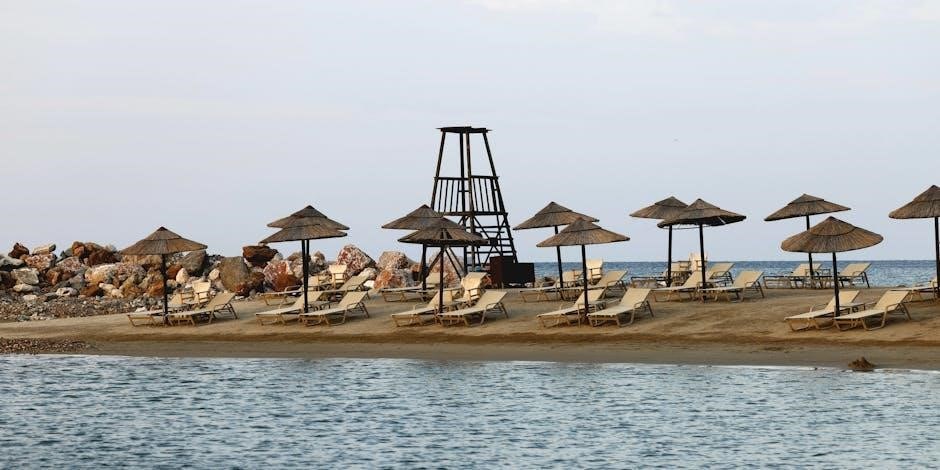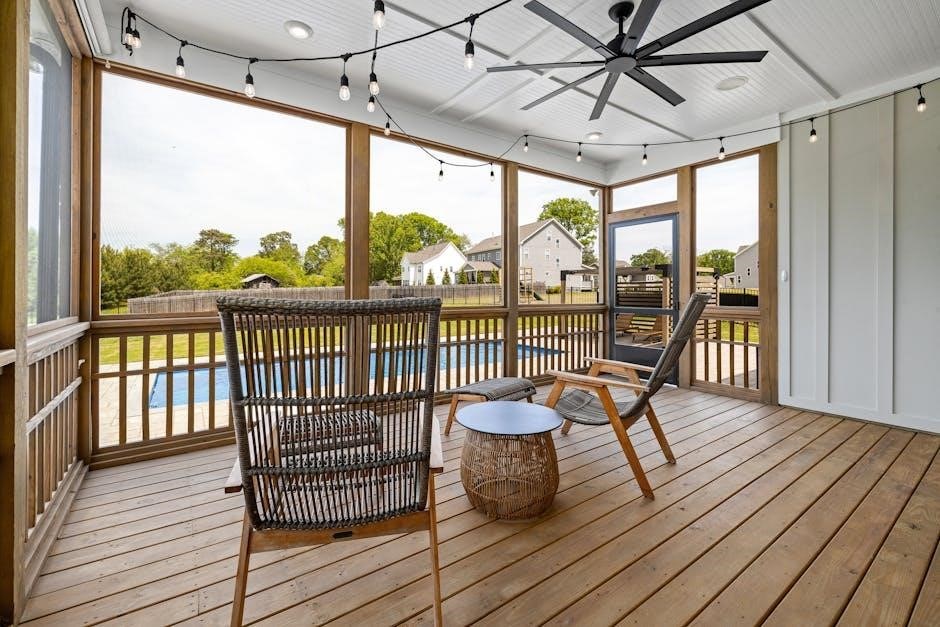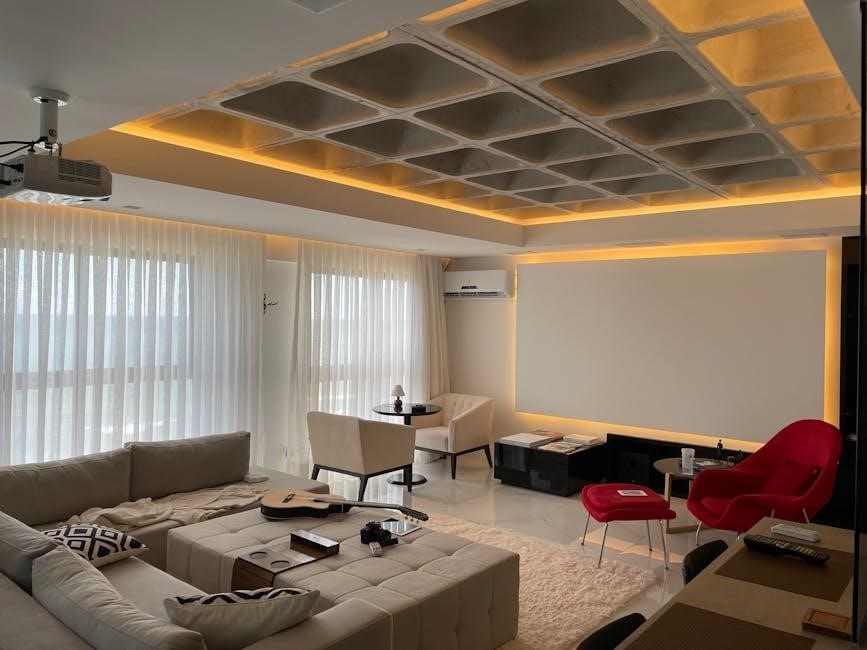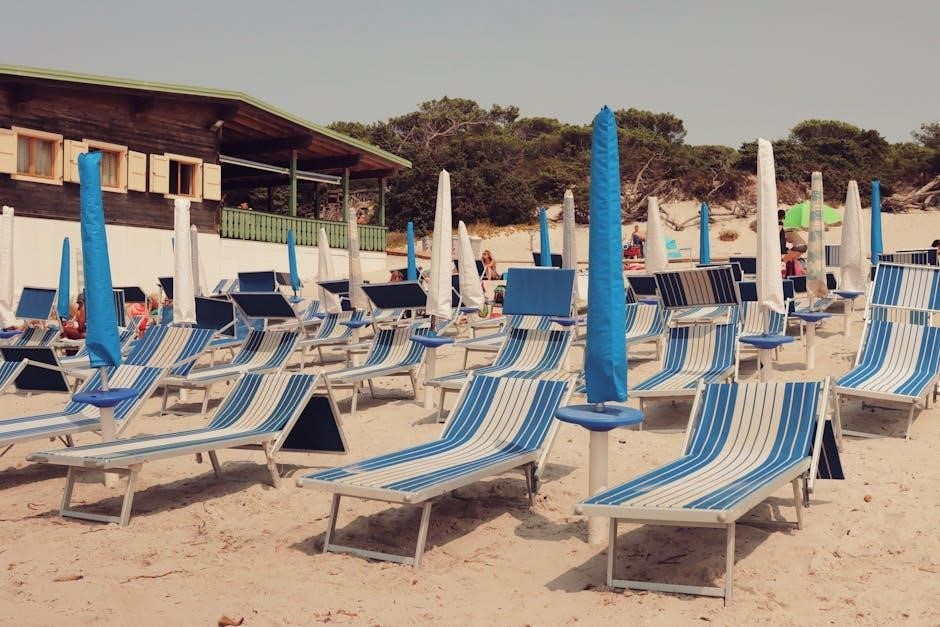Power and manual recliners offer unparalleled comfort and relaxation, catering to different preferences and needs. Power recliners use electric motors for smooth, effortless adjustments, while manual recliners rely on levers or body pressure to recline. Both options provide a cozy retreat, but their mechanisms and benefits vary, making it essential to consider lifestyle, space, and personal convenience when choosing between them.
1.1 Understanding the Basics of Recliners
Recliners are designed to provide comfort and relaxation by allowing users to adjust their position. Power recliners use electric motors for smooth, controlled movements, while manual recliners rely on levers or body weight to adjust. Both types typically feature a reclining backrest and an extendable footrest, enabling users to transition from sitting upright to a reclined position. The core function of a recliner is to enhance comfort and support.
1.2 Importance of Choosing the Right Recliner
Selecting the right recliner is crucial for comfort, support, and relaxation. A well-chosen recliner can enhance your lifestyle, provide relief from stress, and accommodate specific needs like back support or mobility challenges. Considering factors such as adjustability, durability, and ease of use ensures long-term satisfaction. The right recliner adapts to your preferences, offering a personalized experience that elevates your daily comfort and well-being.

Mechanisms and Operation
Power recliners operate via electric motors, offering smooth, controlled adjustments. Manual recliners use levers or body weight to recline, providing simplicity and no power dependency.
2.1 Power Recliner Mechanism
A power recliner operates using an electric motor, allowing for smooth, controlled adjustments. The mechanism typically includes a motor, control panel, and wiring. Users can adjust the backrest and footrest effortlessly with a button or remote. Some models feature programmable positions, memory settings, and USB ports for convenience. The motor ensures precise movements, eliminating the need for manual effort. This mechanism is ideal for those seeking ease of use and advanced functionality.
2.2 Manual Recliner Mechanism
Manual recliners operate using a lever or body pressure to adjust the backrest and footrest. This mechanism relies on physical effort, with no motor involved. The design is simple, durable, and requires minimal maintenance. While they lack the convenience of power recliners, manual models are cost-effective and suitable for those who prefer traditional, low-maintenance furniture.
2.3 Key Differences in Operation
Power recliners operate via electric motors, enabling smooth, precise adjustments with minimal effort, while manual recliners rely on levers or body pressure for movement. Power models offer infinite position control, whereas manual recliners often have predefined settings. This difference in operation caters to varying user preferences, with power recliners providing convenience and manual ones emphasizing simplicity and traditional functionality.

Adjustability and Customization
Power recliners often feature infinite position control and additional adjustments for headrests and leg rests, while manual recliners may offer separate backrest and leg rest customization options.
3.1 Power Recliner Adjustability Features
Power recliners offer precise control with features like infinite position adjustment, adjustable headrests, and leg rests. Many models include memory settings to save preferred positions, enhancing comfort. They often allow separate adjustment of backrest and leg rest, providing a tailored experience. These recliners typically come with intuitive controls, such as buttons or remotes, making it easy to customize your relaxation experience without physical effort, unlike manual recliners with limited positions.
3.2 Manual Recliner Adjustability Features
Manual recliners offer simplicity with a lever or body pressure to adjust positions, typically providing three key settings: upright, partially reclined, and fully reclined. While they lack the infinite adjustability of power recliners, manual models are lightweight, easy to use, and cost-effective. They often feature a straightforward design with fewer mechanical components, making them a practical choice for those who prefer a traditional reclining experience without advanced customization options.
3.3 Comparison of Adjustability Options
Power recliners offer precise, motorized adjustments with infinite position control, allowing users to customize their comfort seamlessly. In contrast, manual recliners provide limited preset positions, typically upright, partially reclined, and fully reclined, relying on levers or body pressure. While power recliners excel in customization, manual models are simpler and more cost-effective, catering to those who prefer traditional functionality without advanced adjustability features.
Cost and Affordability
Power recliners are generally more expensive due to their motorized features, while manual recliners are more affordable with simpler mechanisms. Both options offer value based on user preferences and budget constraints.
4.1 Price Range of Power Recliners
Power recliners typically range from $300 to $2,000, depending on features like adjustable headrests, USB ports, and premium materials. High-end models with advanced settings and luxury upholstery can exceed $2,500. Budget-friendly options with basic motorized functions are available for under $500, offering good value for those seeking convenience without extra frills. Prices vary based on brand, quality, and included features.
4.2 Price Range of Manual Recliners
Manual recliners are generally more affordable, with prices ranging from $100 to $800. Basic models with simple mechanisms start around $100, while mid-range options with added features like adjustable headrests or superior cushioning cost between $300 and $500. High-end manual recliners, crafted with premium materials, can reach up to $1,200. Overall, manual recliners offer a cost-effective solution for those seeking comfort without the need for advanced motorized features.
4.3 Cost Comparison and Value Analysis
Power recliners typically cost more upfront, ranging from $500 to $2,000, due to their advanced motorized features. Manual recliners are more budget-friendly, priced between $100 and $800. While power recliners offer superior adjustability and convenience, manual recliners provide better value for those prioritizing simplicity and affordability. Long-term, power recliners may offer more durability, but manual recliners remain a cost-effective choice for basic comfort needs.

Ease of Use and Maintenance
Power recliners are easier to use with a motor, while manual recliners require physical effort. Power recliners need occasional motor checks, while manual ones demand lever or mechanism maintenance. Both options are relatively low-maintenance, but power recliners may require more attention over time due to their electronic components.
5.1 Maintenance Requirements for Power Recliners
Power recliners require regular maintenance to ensure optimal performance. This includes checking the motor for smooth operation, cleaning electrical components, and lubricating moving parts. Controlled movements reduce wear, but periodic inspections are essential to prevent mechanical issues. Additionally, ensuring proper power supply and avoiding overload is crucial for longevity. Regular upkeep helps maintain the recliner’s functionality and comfort over time.
5.2 Maintenance Requirements for Manual Recliners
Manual recliners require less complex maintenance due to their simpler mechanisms. Regular cleaning and lubrication of moving parts, such as hinges and levers, are essential to ensure smooth operation. Unlike power recliners, they don’t rely on electricity, reducing the risk of motor-related issues. Periodic inspections of the reclining mechanism and frame can help maintain durability and performance over time, ensuring long-lasting comfort and functionality.
5.3 Which Option is Easier to Maintain?
Manual recliners generally require less maintenance due to their simpler mechanisms. They have fewer moving parts and no electrical components, reducing the risk of mechanical failure. Power recliners, while convenient, may need more attention, especially for motor-related issues. Manual recliners are easier to maintain overall, as they rely on basic cleaning and lubrication, whereas power recliners may require professional assistance for repairs, making manual models a more low-maintenance choice.

Benefits and Drawbacks
Power recliners offer smooth, motorized adjustments and customizable positions, ideal for comfort and ease. However, they are more expensive and complex. Manual recliners are cost-effective and simple but may lack advanced features and require physical effort, making them less suitable for those seeking convenience and luxury. Both options have unique trade-offs.
6.1 Advantages of Power Recliners
Power recliners offer unparalleled convenience and comfort with their motorized operation, allowing smooth, effortless adjustments. They provide precise control over positions, enabling users to customize their relaxation experience. Additionally, power recliners are ideal for individuals with mobility challenges, as they eliminate the need for physical effort. Their advanced features, such as adjustable headrests and footrests, enhance comfort, making them a superior choice for those seeking luxury and ease of use.
6.2 Disadvantages of Power Recliners
Power recliners are generally more expensive than manual recliners and require a power source, limiting their placement. They are heavier and bulkier, making them harder to move. Additionally, they may require more maintenance due to their motorized components. The reliance on electricity can be a drawback during power outages, and the environmental impact of the motor and battery disposal should also be considered. While convenient, these factors may outweigh their benefits for some users.
6.3 Advantages and Disadvantages of Manual Recliners
Manual recliners are cost-effective, lightweight, and easy to move, offering a simple, no-frills option. They don’t require electricity, making them portable and ideal for spaces with limited power outlets. However, they rely on physical effort to recline and often have fewer adjustable positions compared to power recliners. This can make them less comfortable for users needing extensive adjustability or those with mobility challenges, balancing affordability with limited functionality.

User Considerations
User considerations focus on lifestyle, mobility, and space. Power recliners suit those seeking comfort and ease, while manual recliners appeal to budget-conscious users. Placement depends on room layout and power availability.
7.1 Who Benefits Most from Power Recliners?
Power recliners are ideal for individuals with limited mobility or those seeking luxurious comfort. They offer effortless adjustments via electric motors, making them perfect for people who need assistance with positioning. Elderly users or those with physical challenges benefit greatly, as they require minimal effort to operate. Additionally, power recliners suit tech-savvy individuals who value advanced features and precise control over their seating experience.
7.2 Who Benefits Most from Manual Recliners?
Manual recliners are perfect for those seeking simplicity and affordability. They are ideal for individuals with smaller spaces or who prefer lightweight furniture. Users who value ease of use without relying on electricity will appreciate their straightforward operation. Additionally, manual recliners are a great choice for budget-conscious buyers and those who prioritize eco-friendly, low-maintenance options, making them suitable for a wide range of lifestyles and preferences.
7.3 Room Placement and Space Requirements
Both power and manual recliners require careful space planning. Power recliners need ample room to recline fully and should be placed near a power outlet. Manual recliners are more flexible and suitable for smaller spaces. Measure your room to ensure the recliner can move freely. Consider your lifestyle and space constraints when choosing, to ensure optimal comfort and functionality.

Long-Term Value and Durability
Power recliners often offer greater durability due to controlled movements, making them a long-term investment. Manual recliners may require more maintenance over time.
8.1 Durability of Power Recliners
Power recliners are known for their robust construction and long-lasting performance. Equipped with advanced motors and mechanical components, they endure extensive use while maintaining smooth operation. Controlled movements reduce wear and tear, ensuring durability. Many models come with extended warranties, reflecting their reliability. Proper maintenance, such as regular cleaning and lubrication, further enhances their lifespan, making them a worthwhile investment for years of comfort and relaxation.
8.2 Durability of Manual Recliners
Manual recliners are known for their durability due to fewer mechanical components. They rely on levers or body pressure, reducing the risk of motor-related issues. However, over time, the manual mechanism may wear out with frequent use. Choosing high-quality materials ensures longevity. Maintenance is straightforward, typically involving lubrication of moving parts. Overall, manual recliners offer reliable performance and can last for many years with proper care.
8.3 Which Option Offers Better Long-Term Value?
Power recliners often provide better long-term value due to their controlled movements and reduced wear on mechanical parts. They require less physical effort and tend to experience less strain over time. Manual recliners, while durable, may wear out faster with frequent use. Ultimately, power recliners generally offer greater longevity and lower maintenance needs, making them a more sustainable choice for long-term comfort and reliability.
Power recliners offer advanced features and ease, while manual recliners provide simplicity and affordability. Both options cater to different needs, ensuring comfort and relaxation for every preference.
9.1 Summary of Key Differences
Power recliners use electric motors for smooth, adjustable movements, often with advanced features like multiple positions and USB ports. Manual recliners rely on levers or body weight, offering simplicity and affordability. Power recliners provide effortless adjustments and customizable comfort, while manual options are lightweight, cost-effective, and require no power. Both cater to different lifestyles, with power recliners suiting those seeking convenience and manual recliners appealing to budget-conscious users valuing simplicity.
9;2 Final Recommendations for Buyers
Choose a power recliner if you prioritize ease of use, customizable comfort, and advanced features, especially if mobility or convenience is a key factor. Opt for a manual recliner if simplicity, affordability, and lightweight design are more important. Consider your lifestyle, budget, and space to make the best decision. Both options offer excellent value, so focus on what aligns with your personal needs and preferences for optimal satisfaction.